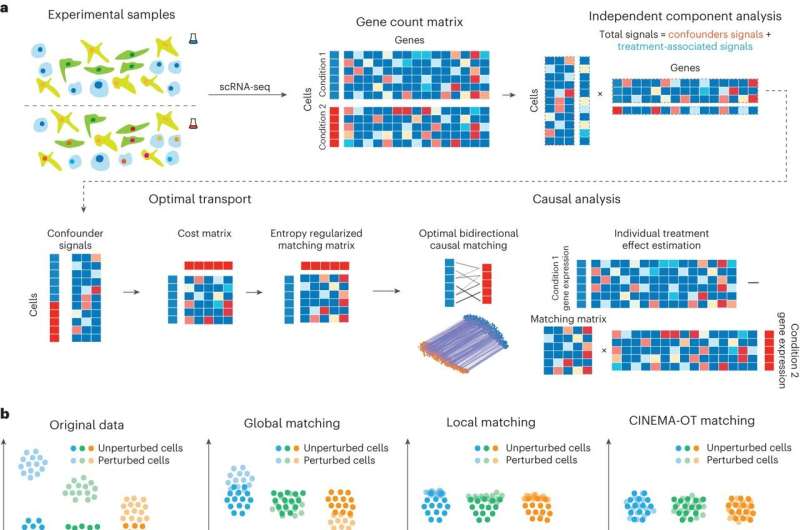This article has been reviewed according to Science X's editorial process and policies. Editors have highlighted the following attributes while ensuring the content's credibility:
fact-checked
peer-reviewed publication
trusted source
proofread
New software tool decodes cytokine 'language' of immune cells

New research from Yale University has unveiled the complex cellular communication system that allows immune cells to mount responses to infection and cancer. The study, published in Nature Methods, reveals how different cells use cytokines to talk to each other to shape immune responses.
Using a new computational method based on a causal inference framework, CINEMA-OT, the Yale team studied how individual immune cells react to combinations of cytokines, or small proteins released by cells that regulate inflammation. They discovered that certain cytokines have a synergistic effect, inducing unique gene activation programs compared to their individual effects. This cryptography of cytokine signals acts as a language, instructing immune cells.
The researchers also applied CINEMA-OT to study how human airways respond when exposed to common cold viruses, cigarette smoke, or both, using laboratory-grown human lung tissue. The analysis revealed that individual cells respond differently to viral infection in the presence of cigarette smoke, with smoke suppressing antiviral defenses in many cell types.
"Tracking cellular responses is challenging as the process of measuring cells is destructive. To solve this problem, we built a new algorithm using ideas from causal inference to match cells between experimental conditions and infer how cells respond to signals," said the paper's senior author David van Dijk, Ph.D., assistant professor of medicine and of computer science.
"The technology used in this research was developed as open-source software for the community to use, providing an unprecedented window into cellular communication," continued van Dijk.
"Deciphering the rules of cytokine signaling will allow better understanding and manipulation of immune responses for emerging immunotherapies," said Jeffrey J. Ishizuka, MD, DPhil, assistant professor of medicine (medical oncology), of pathology, and of immunobiology, one of the study's senior authors.
CINEMA-OT can be accessed via the van Dijk lab website. The team hopes that the use of this technology worldwide will continue to uncover the grammar of immune conversations to accelerate discoveries across biology and medicine.
More information: Mingze Dong et al, Causal identification of single-cell experimental perturbation effects with CINEMA-OT, Nature Methods (2023). DOI: 10.1038/s41592-023-02040-5



















